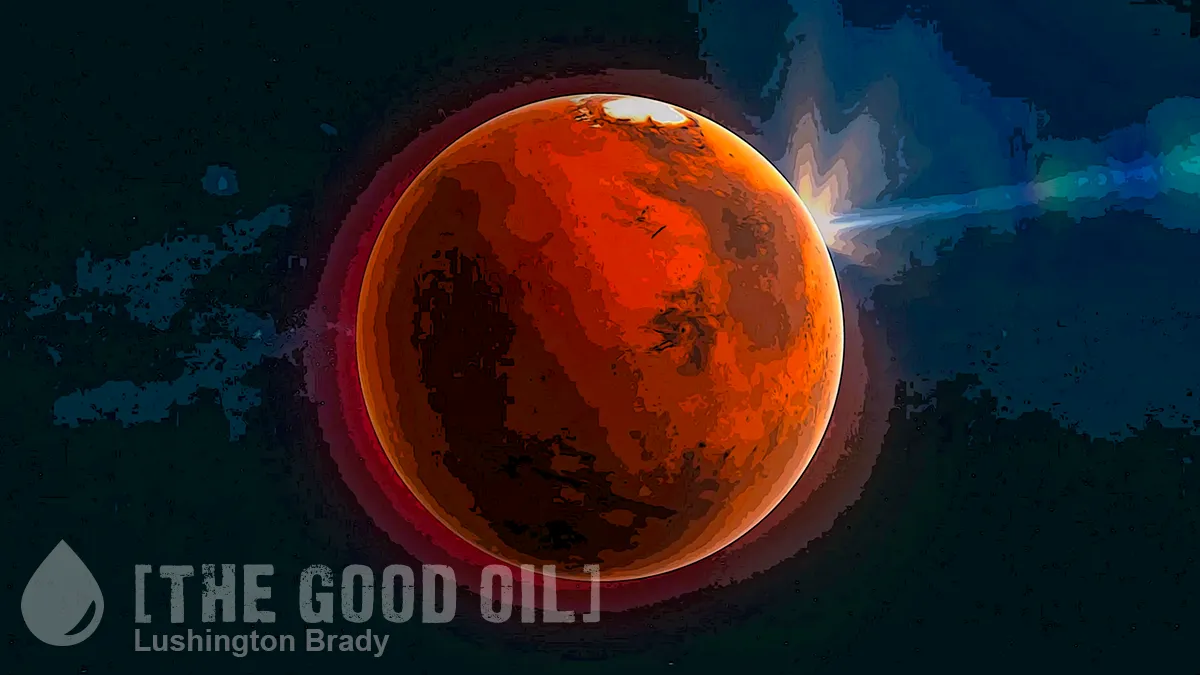If you can be bothered getting up in the early hours before dawn in the next day or so, you’ll be treated to a rare sight in the low north-north-east sky. Jupiter and Mars will appear so close to each other that just barely one degree will separate them. Unfortunately, the closest apparent approach between the two was on Wednesday, but they’ll still be playing cosmic kissy-kissy for a few days yet.
Even better, they’ll form an upside-down colourful elongated triangle with the two bright red stars Aldebaran (the point of the uppermost horn of Taurus) and Betelgeuse (Orion’s left shoulder).
The best views will be in the eastern sky, toward constellation Taurus, before daybreak. Known as planetary conjunctions, these comic pairings happen only every three years or so.
“Such events are mostly items of curiosity and beauty for those watching the sky, wondering what the two bright objects so close together might be,” he said in an email. “The science is in the ability to accurately predict the events years in advance.”
Their orbits haven’t brought them this close together, one behind the other, since 2018. And it won’t happen again until 2033, when they’ll get even chummier.
Mars is also in the news again for another reason – the familiar tale of hope springing eternal for Life on Mars.
Mars may be drenched beneath its surface, with enough water hiding in the cracks of underground rocks to form a global ocean, new research suggests.
The findings released Monday are based on seismic measurements from NASA’s Mars InSight lander, which detected more than 1,300 marsquakes before shutting down two years ago.
This water – believed to be seven miles to 12 miles (11.5 kilometers to 20 kilometers) down in the Martian crust – most likely would have seeped from the surface billions of years ago when Mars harbored rivers, lakes and possibly oceans, according to the lead scientist, Vashan Wright of the University of California San Diego’s Scripps Institution of Oceanography.
Somewhat unusually, given that scientists are too often keen to unreasonably big up the chances of life on the red planet, Wright is hosing down over-excited speculation.
Just because water still may be sloshing around inside Mars does not mean it holds life, Wright said.
What it does mean, though, is potential music to Elon Musk’s ears.
“Instead, our findings mean that there are environments that could possibly be habitable,” he said in an email.
The discovery is predicated on the same sort of seismic measurements that have been used to theorise on the internal composition of the Earth. By measuring how fast the shockwaves from seismic activity moves through rock layers deep underground, scientists can make an educated guess at the likely composition of the rocks.
His team combined computer models with InSight readings including the quakes’ velocity in determining underground water was the most likely explanation. The results appeared Monday in the Proceedings of the National Academy of Sciences.
If InSight’s location at Elysium Planitia near Mars’ equator is representative of the rest of the red planet, the underground water would be enough to fill a global ocean a mile or so (1 kilometer to 2 kilometers) deep, Wright said.
That doesn’t mean, it should be pointed out, that there is a Jules Verne-like literal underground ocean beneath the Martian surface. What it would be is ‘wet rocks’ – water permeating through cracks and porosity in otherwise solid rock.
How did the water get there? Surface evidence, such as erosion patterns and rock samples, suggests that Mars was heavily covered with liquid water very early in the Solar System’s history, some three billion years ago. But, due to its lack of a liquid molten core, Mars has virtually no magnetic fields. The lack of a protective magnetosphere left its atmosphere bare to the solar winds, which slowly stripped the atmosphere away. As the atmospheric pressure plummeted, so did the boiling point of the surface water.
Mars’ oceans, lakes and rivers simply boiled away into space.
All that’s left today is frozen water at the poles – and an ocean’s worth of wet rocks deep below the surface.









